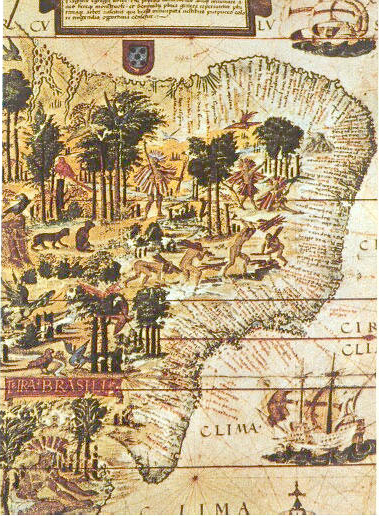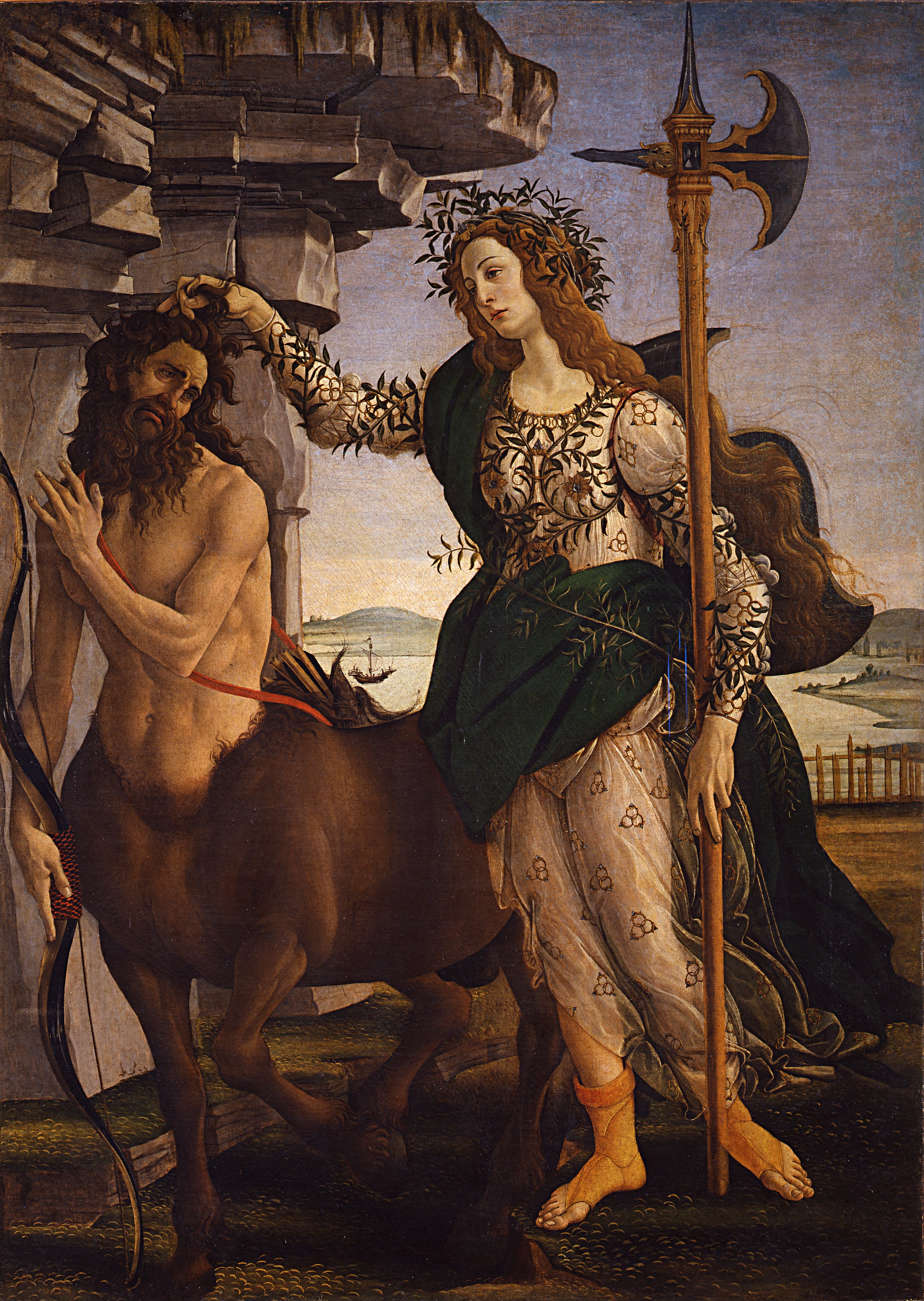|
Terra De Santa Cruz
The name ''Brazil'' is a shortened form of ''Terra do Brasil'' ("Land of Brazil"), a reference to the brazilwood tree. The name was given in the early 16th century to the territories leased to the merchant consortium led by Fernão de Loronha, to exploit brazilwood for the production of wood dyes for the European textile industry. The term for the brazilwood tree in Portuguese, ''pau-brasil'', is formed by ''pau'' ("wood") and '' brasa'' ("ember"), the latter referring to the vivid red dye that can be extracted from the tree. The word ''brasa'' is formed from Old French ''brese'' ("ember, glowing charcoal"). Native names According to tradition, before colonisation, the native name of the land was the one given by the local indigenous peoples, ''Pindorama'' (Tupi for "Land of the Palms"). However, exact translation of "Land of Palms" would be ''Pindotetama'' or ''Pindoretama'' in the Tupi language, suggesting ''Pindorama'' may be a later corruption of the original term. ''Pind ... [...More Info...] [...Related Items...] OR: [Wikipedia] [Google] [Baidu] |
Pêro Vaz De Caminha
Pêro Vaz de Caminha (c. 1450 – 15 December 1500; , ; also spelled Pedro Vaz de Caminha) was a Portuguese knight that accompanied Pedro Álvares Cabral to India in 1500 as a secretary to the royal factory. Caminha wrote the detailed official report of the April 1500 discovery of Brazil by Cabral's fleet (''Carta de Pêro Vaz de Caminha'', dated 1 May, 1500). He died in a riot in Calicut, India, at the end of that year. Biography Pêro Vaz de Caminha was the son of Vasco Fernandes de Caminha, a knight of the household of the Duke of Guimarães (later Braganza). His ancestors were among the first settlers of Neiva during the reign of Ferdinand I (r.1367–83). On 8 March 1476, Pêro Vaz de Caminha was appointed ''mestre da balança'' (master of the scale) of the royal mint of Porto, one of the many positions held by his father at the time. The appointment letter, which characterized Pêro Vaz as a knight of the royal household, was written from Toro, suggesting that Pêro Vaz h ... [...More Info...] [...Related Items...] OR: [Wikipedia] [Google] [Baidu] |
Cosmographiae Introductio
''Cosmographiae Introductio'' ("Introduction to Cosmography"; Saint-Dié, 1507) is a book that was published in 1507 to accompany Martin Waldseemüller's printed globe and wall-map (''Universalis Cosmographia''). The book and map contain the first mention of the term 'America'. Waldseemüller's book and maps, along with his 1513 edition of Ptolemy’s ''Geography'', were very influential and widely copied at the time. It is widely held to have been written by Matthias Ringmann although some historians attribute it to Waldseemüller himself. The book includes the reason for using the name America in the wall map and the globe, and contains a Latin translation of the four journeys of Amerigo Vespucci as an appendix. The full title of the book is: ''Cosmographiae introductio cum quibusdam geometriae ac astronomiae principiis ad eam rem necessariis. Insuper quatuor Americi Vespucii navigationes. Universalis Cosmographiae descriptio tam in solido quam plano, eis etiam insertis, quae ... [...More Info...] [...Related Items...] OR: [Wikipedia] [Google] [Baidu] |
New World
The term ''New World'' is often used to mean the majority of Earth's Western Hemisphere, specifically the Americas."America." ''The Oxford Companion to the English Language'' (). McArthur, Tom, ed., 1992. New York: Oxford University Press, p. 33: "[16c: from the feminine of ''Americus'', the Latinized first name of the explorer Amerigo Vespucci (1454–1512). The name ''America'' first appeared on a map in 1507 by the German cartographer Martin Waldseemüller, referring to the area now called Brazil]. Since the 16c, a name of the western hemisphere, often in the plural ''Americas'' and more or less synonymous with ''the New World''. Since the 18c, a name of the United States of America. The second sense is now primary in English: ... However, the term is open to uncertainties: ..." The term gained prominence in the early 16th century, during Europe's Age of Discovery, shortly after the Italian explorer Amerigo Vespucci concluded that America (now often called ''the Am ... [...More Info...] [...Related Items...] OR: [Wikipedia] [Google] [Baidu] |
Lorenzo Di Pierfrancesco De' Medici
Lorenzo di Pierfrancesco de' Medici (4 August 1463 – 20 May 1503), nicknamed ''the Popolano'', was an Italian banker and politician, the brother of Giovanni il Popolano. He belonged to the junior (or "Popolani") branch of the House of Medici of Florence. Biography Lorenzo was born in Florence, the son of Pierfrancesco de' Medici (the Elder) and Laudomia Acciaioli. Relations between the senior Medici branch and the younger "Popolani" branch had been tense since the 1440s, and Pierfrancesco had tried to shield his sons from the influence of the senior branch.Brown, A. (1993) ''The Medici in Florence: the exercise and language of power''. Florence: Olschki But Lorenzo and Giovanni were still boys when their father Pierfrancesco died in 1476, and they promptly came under the tutelage of their older cousin, Lorenzo (il Magnifico), the effective ruler of Florence. Facing financial difficulties after 1478, Lorenzo il Magnifico plundered the Popolani boys' inheritance with "forc ... [...More Info...] [...Related Items...] OR: [Wikipedia] [Google] [Baidu] |
Thomé Lopes
Thomé Lopes (sometimes modernized as Tomé Lopes) was a Portuguese scrivener, writer of an eyewitness account of the second journey of Vasco da Gama to India (1502–1503). Thomé Lopes's background is obscure. All that is known is that he was a native of Porto, Portugal. In early 1502, Thomé Lopes was hired as a ''escrivão'' (captain's clerk) aboard an unnamed ship owned and outfitted by Ruy Mendes de Brito (a gentleman of the royal chamber of King Manuel I of Portugal) and captained by an Italian, Giovanni Buonagratia (João de Buonagracia) of Florence. This ship was part of a Portuguese squadron of five ships, under the overall command of Estêvão da Gama (cousin of Vasco da Gama). This squadron set out from Lisbon on 1 April 1502, intending to catch up and join the 4th Portuguese India Armada of admiral Vasco da Gama, which had left a few months earlier (February 1502). According to Lopes, their squadron caught up with the main armada on 21 August 1502 at Anjediva ... [...More Info...] [...Related Items...] OR: [Wikipedia] [Google] [Baidu] |
Marino Sanuto The Younger
Marin Sanudo, italianised as Marino Sanuto or Sanuto the Younger (May 22, 1466 – 1536), was a Venetian historian and diarist. His most significant work is his ''Diarii'', which he had intended to write up into a history of Venice. Biography Early life He was born into a patrician family of Venice, the son of the senator Leonardo Sanuto. Left an orphan at the age of eight, he lost his fortune owing to the bad management of his elder brother, who eventually left the family for Syria. Thus, Sanuto was for many years hampered by want of means. He spent the rest of his childhood under the protection of his uncle, Francesco Sanuto, who may have also supported him financially. Sanuto began writing early. Aged fifteen, he wrote the ''Memorabilia Deorum Dearumque'', on the antique gods and goddesses. In 1483 he accompanied his cousin Mario, who was one of the three ''sindici inquisitori'' deputed to hear appeals from the decisions of the ''rettori'', on a tour through Istria and t ... [...More Info...] [...Related Items...] OR: [Wikipedia] [Google] [Baidu] |
Parrot
Parrots, also known as psittacines (), are birds of the roughly 398 species in 92 genera comprising the order Psittaciformes (), found mostly in tropical and subtropical regions. The order is subdivided into three superfamilies: the Psittacoidea ("true" parrots), the Cacatuoidea (cockatoos), and the Strigopoidea (New Zealand parrots). One-third of all parrot species are threatened by extinction, with higher aggregate extinction risk ( IUCN Red List Index) than any other comparable bird group. Parrots have a generally pantropical distribution with several species inhabiting temperate regions in the Southern Hemisphere, as well. The greatest diversity of parrots is in South America and Australasia. Characteristic features of parrots include a strong, curved bill, an upright stance, strong legs, and clawed zygodactyl feet. Many parrots are vividly coloured, and some are multi-coloured. Most parrots exhibit little or no sexual dimorphism in the visual spectrum. They form the most ... [...More Info...] [...Related Items...] OR: [Wikipedia] [Google] [Baidu] |
Damião De Góis
Damião de Góis (; February 2, 1502January 30, 1574), born in Alenquer, Portugal, was an important Portuguese humanist philosopher. He was a friend and student of Erasmus. He was appointed secretary to the Portuguese factory in Antwerp in 1523 by King John III of Portugal. He compiled one of the first accounts on Ethiopian Christianity. Biography Góis (originally spelled as ''Goes'') was born in Alenquer, Portugal, into a noble family who served the Portuguese kings. His father, Rui Dias de Góis was a valet to Duke of Aveiro, and his mother was Isabel Gomes de Limi, a descendant of Flemish merchants who established themselves in Portugal. Damião's patrilineal great-grandfather, Gomes Dias de Góis, had been in the entourage of Prince Henry the Navigator. Around 1518, Góis joined the court of King Manuel I of Portugal. Under Manuel I’s successor, King John III of Portugal, in 1523, he was sent to Antwerp, as secretary and treasurer of the Portuguese ''feitoria'' (fact ... [...More Info...] [...Related Items...] OR: [Wikipedia] [Google] [Baidu] |
João De Barros
João de Barros () (1496 – 20 October 1570), called the ''Portuguese Livy'', is one of the first great Portuguese historians, most famous for his ''Décadas da Ásia'' ("Decades of Asia"), a history of the Portuguese in India, Asia, and southeast Africa. Early years Educated in the palace of Manuel I of Portugal, he composed, at the age of twenty, a romance of chivalry, the ''Chronicle of the Emperor Clarimundo'', in which he is said to have had the assistance of Prince John (later King John III). Upon ascending the throne, King John III awarded Barros the captaincy of the fortress of St George of Elmina, to which he proceeded in 1524. In 1525, he obtained the post of treasurer of the India House, which he held until 1528. To escape from an outbreak of bubonic plague in 1530 Barros moved from Lisbon to his country house near Pombal, where he finished a moral dialogue, ''Rho pica Pneuma'', which was praised by Juan Luís Vives. On his return to Lisbon in 1532 the king appoi ... [...More Info...] [...Related Items...] OR: [Wikipedia] [Google] [Baidu] |
Gaspar Correia
Gaspar Correia (1492 – c. 1563 in Goa) was a Portuguese historian considered a Portuguese Polybius. He authored ''Lendas da Índia'' (Legends of India), one of the earliest and most important works about Portuguese rule in Asia. Miguel is a given name and surname, the Portuguese and Spanish form of the Hebrew name Michael. It may refer to: Places *Pedro Miguel, a parish in the municipality of Horta and the island of Faial in the Azores Islands * São Miguel (disamb ... shortly after Correia's death and copies circulated only among authorised persons. One author claims, without citing any source, that the manuscript was published in 12 volumes in 1556 but, if it existed, no trace remains. His family retained the manuscript of the original, which was printed in 1858 (first part) and 1864 (second part) by the Royal Academy of Sciences of Lisbon. He died around 1563 in Goa, Portuguese India. References Bibliography * CORREIA, Gaspar. ''Lendas da Índia'' (introduction a ... [...More Info...] [...Related Items...] OR: [Wikipedia] [Google] [Baidu] |



